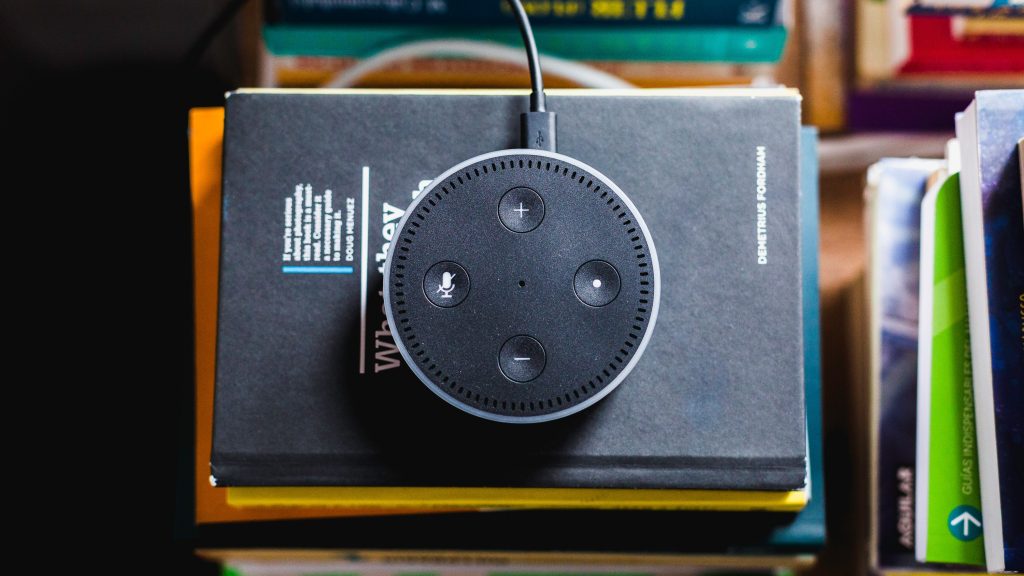
What exactly is a voicebot?
If you missed the media frenzy surrounding voicebots, here’s a quick catch-up; a voicebot is a vocal conversational robot. They are equipped with the same capabilities as chatbots, meaning an understanding of natural language and the ability to respond to users automatically. The only difference lies in the interaction interface, which in this case is vocal. The most famous voicebots include Google Assistant, Alexa, or even Siri.
Some of these vocal assistants can be found in recent car models, smartphones or even some connected speakers such as Google Home, Amazon Echo or HomePod. In terms of innovation, they are the very latest, must-have technologies, that companies dream of acquiring in order to offer a unique and out of the ordinary user experience.
Voicebots, simple gadgets or future technological revolution?
Despite an increase in vocal applications and their different uses, user satisfaction is not always guaranteed. As such, many of us still shy away from using these conversational robots in our everyday lives, primarily for the following reasons:
- They require behavioural change; not everyone is comfortable talking to an object. Just look at the number of people who use the vocal assistant on their telephone (do you?)
- We don’t know what to ask. Or how to go about it. What can they understand? The experience is disappointing when the voicebot doesn’t know how to respond (even more so than with a chatbot!)
- We can’t have a “real” conversation with them. They respond to simple vocal commands such as “Switch the light on”, “Turn the music on”, or common questions such as “What’s the weather like?”, but you cannot enter into an actual dialogue with them
- We don’t always understand their utility
- We don’t trust them (am I being listened to? what happens to all my data?)
So, with this in mind, why are voicebots expected to be a revolution in years to come?
Voicebots, tomorrow’s must-have technology
> They free up your hands
Voicebots allow users to multitask, enabling them to complete an action without having access to the control interface in question. Vocal command is particularly useful in cars, because it allows the user to drive whilst using their smartphone or changing their vehicle configuration.
They are well suited to other everyday situations; who has never covered their smartphone with flour in the kitchen whilst trying to read the next part of a recipe? When it would be so much easier to say out loud, “What’s the next step?”.
> They facilitate accessibility
Vocal assistance makes technology accessible to everyone; in particular young children, old people, people with disabilities, or even illiterate people. By simply using their voice, a multitude of actions and information become readily available to them.
> They personalise
Voice is a strong marker of a person or brand’s identity. For a company, it is a factor of differentiation and personification. Just as you would choose your logo, slogan or visual identity, you choose a voice for your brand and Voicebot. It should be easily identifiable by its tone, character and personality. Who in France wouldn’t immediately recognise Simone, the SNCF train service’s voice? Voice is becoming a major topic of consideration for communication and marketing teams.
> They ‘re-enchant’ the user experience
Users are more and more demanding; they want novelty, new experiences, sensations and emotion. Which is precisely what voicebots have to offer. If the user experience is thought out and built with the right users in mind, then the final result will be very impressive. This is the case for insurance company MACSF’s telephone voicebot, for example. Deployed for their beneficiaries, it won the Argus prize that rewards innovation initiatives in the insurance industry.
The stakes are just as high as the risk of a disappointing experience. But when the voice design concepts are respected, and the instances of use and processes well built, then voicebots are the easiest and quickest ways for users to access your services.

A few Voice Design best practices
Creating a good voicebot is not trivial. A design phase specifically for the use of voice is required, known as Voice Design, in order to produce a Voice User Interface (VUI) worthy of that name. To guarantee a unique vocal experience, certain principles must be respected:
- Guide users interacting with the voicebot, on what they can and cannot do, but also when the bot does not understand something. “Sorry, I can only help you in the kitchen” will always be better received than an abrupt “I don’t understand”
- Take the context of the conversation into account (user profile, time, location, voicebot conditions of use, etc.), in order to enrich the dialogue with relevant suggestions
- Be brief and concise; a user’s time is precious. Avoid long monologues and leave pauses for the users to express themselves too
- Give the voicebot a personality to increase its emotional impact (and therefore the brand’s)
- Make the conversation feel human; tone of voice, nuance, interruptions, human expressions (“hmm, yes I see”, ”perfect”, “noted”)
- Divide up the construction of the voicebot to improve the VUI progressively
- Favour sentences and questions leading to precise answers; “Please specify if you would like to book a hotel or a taxi?” would work better than “Would you like to book a hotel or a taxi?”
The list is long and non-exhaustive. Each voicebot is unique, and therefore needs to be adapted, whenever possible, to each instance of use.
So, will Voicebots replace Chatbots?
Speaking is 3 times faster than typing on a keyboard. Speech is mastered well before writing and is our most natural form of communication. Since a UX without visuals frees the user from interfaces, many believe that this will become our new standard.
That is not to say that Chatbots have signed their death warrant. On the contrary, their use can be complementary to Voicebots, depending on user preferences and the conditions of use. For example, a chatbot will be favoured in noisy or public places for discretion and confidentiality reasons. They still have a bright future ahead!





